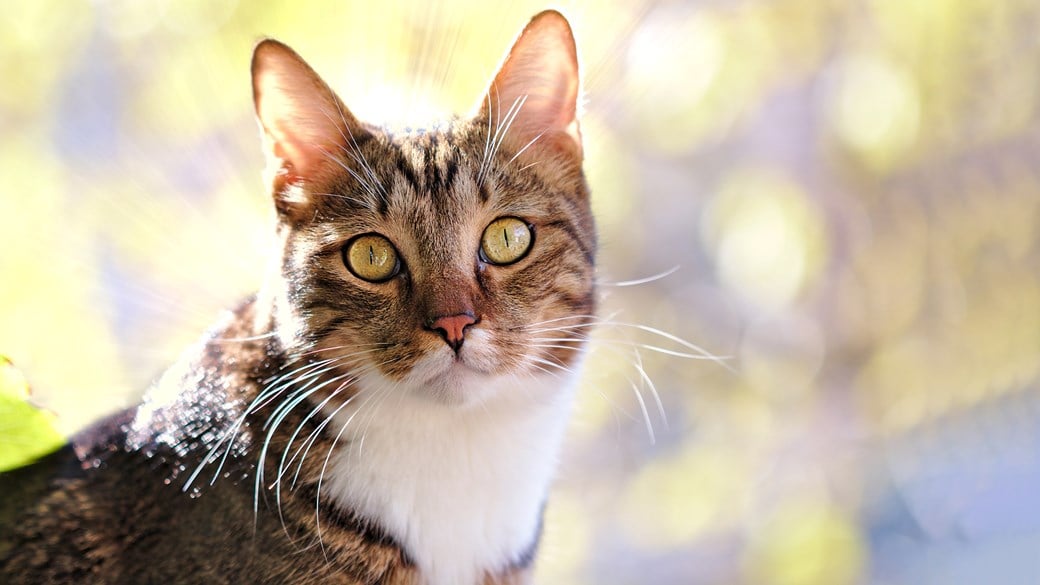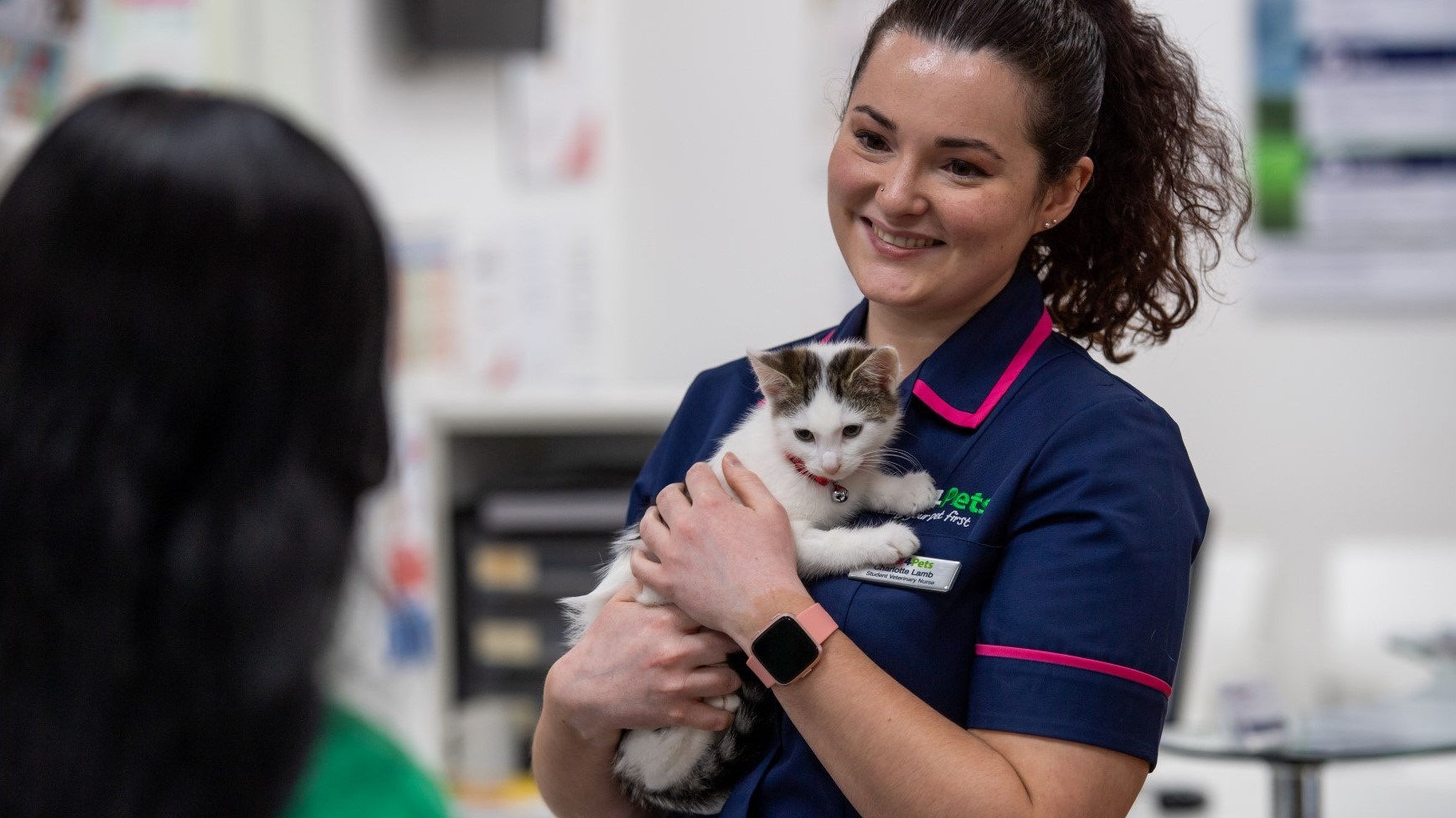
Neutering Your Cat
Neutering is a surgical procedure to prevent your cat from reproducing. In females this is called ‘spaying’ and in males, it is called ‘castration’.
Both spaying and castration are done under a general anaesthetic, and involve your cat staying with your local Vets4Pets as a day patient.
Neutering provides a range of great benefits for both you and your cat, and helps you keep your cat happy and healthy. Here at Vets4Pets we recommend neutering from four months of age, as cats can reach reproductive maturity very quickly.
Read more about neutering your cat
Neutering is a surgical procedure, undertaken to prevent both female and male cats from reproducing. In males (toms) the testicles are removed – this is the main source of the hormone testosterone, so levels of this hormone fall after the surgery.
It is common practice for the ovariohysterectomy technique (removal of both ovaries and uterus) to be used for cat spaying in UK. However individual practices have their own protocols in place, and both methods of cat spaying - ovariectomy (ovary removal only) and ovariohysterectomy are an accepted technique for spaying of female cats. Once spayed, your cat will no longer be able to fall pregnant, and will also not have any seasons. If you have further questions about the procedure, please do speak with your local Vets4Pets vet.
In all cases, neutering involves a general anaesthetic. Your cat will come into the practice in the morning, stay for the day to have the operation, and in most cases will be reunited with you the same day. Although all surgical procedures come with some risk, neutering is the most common procedure undertaken at our vet practices, and the techniques are very safe. Neutering cats is also a relatively quick procedure, especially males, which helps keep the risk low.
Although all surgical procedures can be uncomfortable, recovery from neutering is usually very rapid. In the vast majority of cases cats are on their feet within a few hours of the procedure, and are also given pain-relief drugs for the procedure itself, and throughout recovery while necessary. Some cats may be subdued for a day or so following the procedure, and may appear drowsy or a little wobbly that evening, but most cats are back to their normal selves within a few days.
Full recovery, including skin healing, is generally under ten days. Keeping the area clean, and making sure your cat cannot lick the area, will allow that natural healing process to take place as quickly as possible. Cats should be kept inside during recovery – your vet will be able to recommend when they can go back outdoors at the post-operative check.
Many owners and cats have reservations about the ‘cone’ that cats have to wear to prevent them licking at their stitches or surgical site. Although the cone can be difficult for some cats to adjust to, it performs a really important role. Cats will naturally lick at a wound to clean it. In this case, the incision was made under sterile conditions and doesn’t need cleaning; in fact, the bacteria inside a cat’s mouth will actually introduce more bacteria into the surgical area. This can lead to nasty infections, a longer recovery time, increased costs and… being back in the cone! Although most cats who have been spayed require some protection for the incision, after castration a cone is sometimes not required as the incisions are very small – your vet will give you their recommendation on this for your cat.
There are some alternatives to the cone available, such as specially designed ‘onesies’, which may be more suitable to your cat. Some owners also fashion protective wear out of human clothes such as babygrows, but care should be taken in these cases as they may be easier for your cat to get around.
If your pet struggles to eat with the cone on, there is no problem removing it for mealtimes – just remember to watch your cat, and replace the cone once they have finished.
- No risk of pregnancy. Pregnancy is a difficult time, and cats do not get the emotional reward we may from reproducing. Cats can have multiple litters per year, and pregnancy and birth both carry risks to both your cat and the kittens.
- Removes risk of uterine infection. In female cats an infection of the womb (called a pyometra) can occur and is sometimes fatal. Spaying completely removes the risk of your cat developing a pyometra.
- Neutering helps reduce the drive to roam. Especially in male cats, this drive can lead to road traffic accidents and loss. Cats with a drive to escape the house can also be quite creative in their methods, including high windows, small gaps and other dangerous routes.
- Mammary (breast) cancers can occur in cats. Early neutering greatly reduces the risk of these cancers occurring.
- No worry about pregnancy. An unwanted pregnancy can be a large emotional and financial worry, with the additional stress of having to find homes for the kittens.
- No seasons. A female cat in season can be very loud as they ‘call’ to other local cats. This behaviour can happen in the night as well as in the day and, as female cats continue to cycle rapidly if they do not fall pregnant, can be very frustrating behaviour for owners. This calling also attracts suitors to the garden, who can also be loud and persistent.
- Reduced marking behaviour. Un-neutered male cats can be very territorial and may use urine to mark the house as ‘theirs’. Although this is not the only potential reason for urinating outside the litter tray, having your cat neutered will help reduce the risk of marking behaviour in the home.
- There are also many thousands of unwanted cats in the UK alone. Neutering your cat to remove the risk of unwanted pregnancy is a great step towards helping us keep the number of rescue cats as low as we possibly can.
It is a common misconception that it is healthy, or nice, to let your cat have a litter. There are no recorded health benefits for a cat to having a litter.
As well as this, cats do not form the same lifelong bonds with their offspring as we do and they do not get the same emotional benefit as we may from having a baby. This means that there is no reason to let your cat have a litter, and in fact delaying neutering increases the change of negative consequences such as urine marking, infections and phantom pregnancies developing.
Cats can be neutered from four months old. This may seem young, but cats can become sexually mature soon after this, and getting your cat neutered early is the best for them – neutering groups such as KIND are working hard to spread awareness of how important early neutering is. Some vets do still recommend neutering at 5-6 months, and it is safe to neuter cats at any age.
Cats that are going to be outdoors should not be let out until they are neutered.
After neutering your cat’s calorie needs will fall. Being neutered will not directly result in weight gain, but if your pet eats the same daily calories before and after the procedure they may start to gain some extra kilograms. Feeding a diet specially formulated for neutered pets, or slightly dropping your cat’s daily calories alongside monitoring their weight, will ensure your cat keeps healthy and slim after the procedure.
Health Plans to keep your cat healthy
At Vets4Pets we offer a range of Health Plans that make essential routine treatments more affordable. You'll save money on things like annual vaccinations, flea and worm treatment and routine health check-ups.

Cat Advice
Read more of our expert cat advice to keep your cat happy and healthy.
